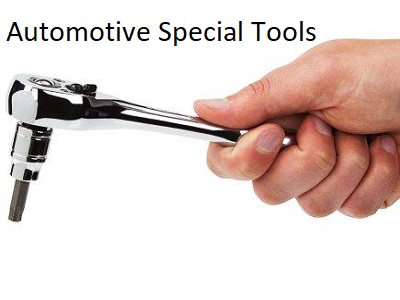Must have Automotive Special Tools
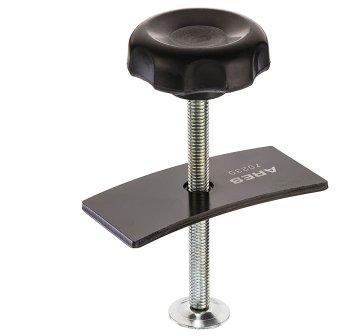
In some cases you can find your way around using special tools. With that said, using a pair of channel locks instead of a tool designed for the task can damage automotive parts and systems. Owning the right tools can make you a better mechanic. As an example, when do-it-yourself technicians perform a brake job in the driveway, they find it necessary to compress the caliper piston. The failure to properly move the piston back into its bore can damage caliper.
Automotive supply companies offer a brake caliper tool that assures the piston gets compressed evenly. This protects the seals and the delicate aluminum piston as it’s seated in the cast-iron caliper housing. Despite this automotive special tool coming in at under $10 you see professional and do-it-yourself mechanics avoid this purchase. Nevertheless, the lack of a brake caliper special tool won’t stop you from performing a brake job.
However, automotive special tools exist that you cannot live without. In the example above, a little ingenuity and a block of wood gets the job done. In this article we’ll talk about automotive equipment without a known substitute. This doesn’t mean these auto repair tools carry a high price tag. In fact, we’ll concentrate on items under 50 dollars. This way, you’ll be able to add them to your DIY auto repair toolbox without breaking the bank.
Torx Automotive Special Tool
Let me run a common scenario past you. A do-it-yourself driveway mechanic picks up a set of brake pads for a weekend project at home. They remove the wheels and find out the caliper retaining bolts use a six point star pattern. They look in their auto repair toolbox and realize they don’t own anything to remove these bolts. If they try a pair channel locks they find the rounded design and thread locker applied from the factory prevents removal with any other tool.
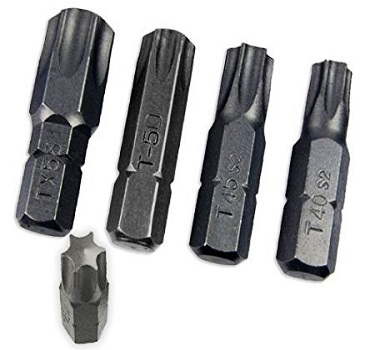
Many think that the Torx tool is something new in the automotive industry. However the tools original design surfaced in 1967. Throughout the decades the popularity of usage continues to increase exponentially. Small Torx fasteners used on headlight bezels and trim pieces utilize a T-15 size. Brake calipers use a much larger Torx fastener. Some of the more common sizes include the T–40 and the T–50. It remains extremely important to use the right size on the particular fastener.
Failure to do so allows slippage and damage to occur to the fastener. Once you knock the corners off of the star pattern these bolts become extremely difficult to remove. This also makes replacing worn Torx sockets and bits of the utmost importance. Once these tools start to fit loosely in the fasteners they cause more harm than good. A complete set of Torx sockets ranging from size T-8 through T-55 covers the most commonly used sizes. Professional mechanics often need to purchase additional Torx bits and sockets to perform specific tasks. As an example, automotive seat belts use a T 60 fastener to anchor them to the floor. Technicians may also need to purchase Torx sockets. On modern automobiles, you find the use of Torx head studs on exhaust manifolds and other engine parts.
Cooling System Special Tool
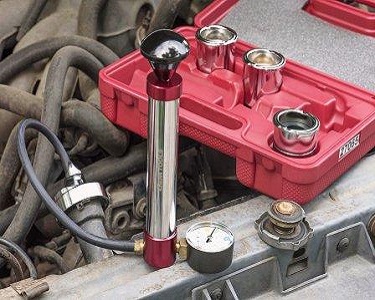
Diagnosing automotive cooling systems remains challenging for at home do-it-yourself mechanics. Slow leaks become difficult to pinpoint if not impossible. However, when it comes to common coolant leaks we often find problems in the radiator or hoses. The main barrier to proper diagnosis remains the normal operating pressure of an automotive cooling system. Cars run with pressures in the 15 psi range. This increases the boiling temperature of water and prevents air infiltration.
The challenge for mechanics is when these systems leak only at full pressure. This led to the development of a cooling system pressure tester. This device replaces the radiator cap and allows you to hand pump pressure throughout the cooling system. The tool includes a pressure gauge to let you know when you reach the 15 psi range. When you stop pumping the system should hold pressure. If it doesn’t, you have a coolant leak. The faster the pressure leaks down the larger the leak.
Heater hoses and radiator hoses will often hold water until they reach normal operating conditions. Any pinhole leaks or loose hose clamps become easily identifiable using the cooling system pressure tester. This is another piece of automotive equipment that comes in below the $50 price tag. In fact, if you shop around you’ll find them used on popular auction sites in the sub $30 range.
Engine Compression Tester Tools
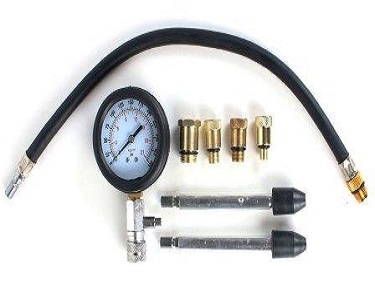
The engine compression tester makes my list of must have automotive special tools for those that own high mileage vehicles. You can get your hands on a brand-new compression tester in the $20 price range. However, the information it provides is priceless for those attempting to diagnose drivability issues on automobiles with more than 100,000 miles.
A car with a rough running engine, bucking or hesitation remains difficult to diagnose. Some mechanics aren’t exactly sure where to begin diagnosis. In fact, many try to solve the issue by replacing spark plugs, ignition system coil packs and other tune-up parts. This is a complete waste of time and money if the engine has internal problems.
Performing a complete engine compression test provides insight into the engines overall health. We obtain the test readings by removing the spark plug and threading the tool into the cylinder head. Next we turn the engine over a couple of times and receive the maximum compression reading. We can then compare this reading to the manufacturer’s specified guidelines in the auto repair manual.
Not only can we see if the compression falls within the specifications, but we can compare readings between cylinders. Pairs of low cylinders might indicate a blown head gasket between those two compression chambers. A single cylinder with a low reading can indicate an engine valve problem. This data can stop you from wasting money on replacing parts on an engine with compression problems.


